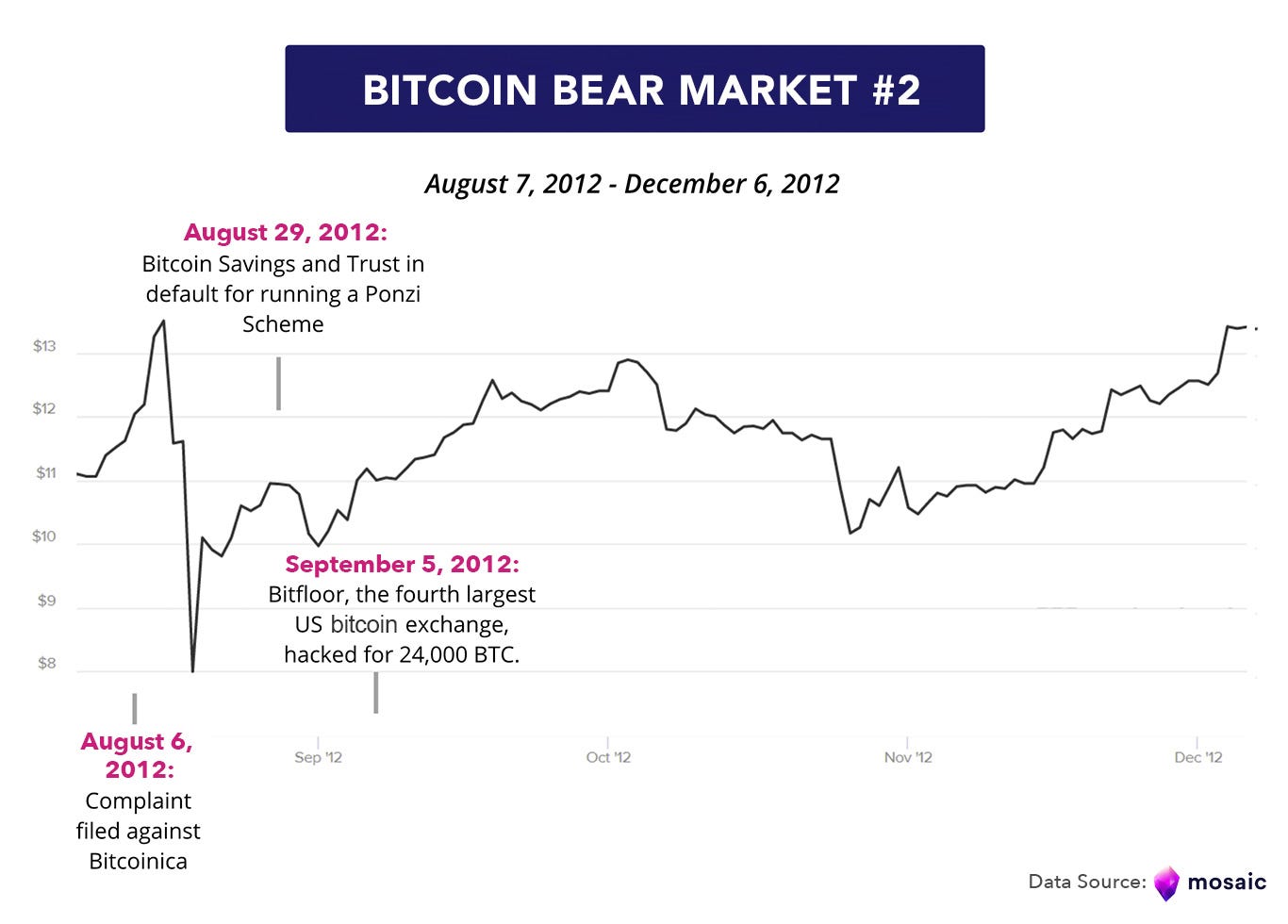How to Navigate Bear Markets in Crypto

- Understanding the nature of bear markets in the crypto world
- Strategies for protecting your investments during a bear market
- Identifying key indicators of a bear market in the crypto space
- Tips for staying calm and rational when the market is down
- Exploring alternative investment options during bear markets
- Preparing for potential opportunities that arise in a bear market
Understanding the nature of bear markets in the crypto world
Understanding the nature of bear markets in the cryptocurrency world is crucial for investors looking to navigate these challenging times. Bear markets are characterized by a prolonged period of declining prices, pessimism, and overall negative sentiment in the market. During a bear market, prices tend to fall by 20% or more from their recent highs, leading to a sense of uncertainty and fear among investors.
It is essential to recognize that bear markets are a natural part of the market cycle and can present unique opportunities for savvy investors. By understanding the underlying factors driving the market downturn, investors can make informed decisions about their investments and position themselves for long-term success.
One key factor to consider during a bear market is market sentiment. Negative news and events can exacerbate the downward trend, leading to further price declines. It is essential for investors to stay informed about market developments and to remain objective in their analysis of the situation.
Additionally, it is crucial to have a diversified portfolio during a bear market. Diversification can help mitigate risk and protect against significant losses in any one asset. By spreading investments across different cryptocurrencies and asset classes, investors can reduce their exposure to market volatility and increase their chances of weathering the storm.
Strategies for protecting your investments during a bear market
When facing a bear market in the crypto world, it is crucial to have strategies in place to protect your investments. Here are some key tactics to consider:
- Diversification: One of the most effective ways to safeguard your investments during a bear market is to diversify your portfolio. By spreading your investments across different cryptocurrencies, you can reduce the risk of significant losses.
- Stop-loss orders: Implementing stop-loss orders can help you limit your losses by automatically selling a cryptocurrency when it reaches a certain price. This can prevent you from holding onto a declining asset for too long.
- Staying informed: Keeping up to date with the latest news and developments in the crypto market is essential for making informed investment decisions. By staying informed, you can react quickly to market changes and adjust your strategy accordingly.
- Long-term perspective: It is important to remember that bear markets are a natural part of the market cycle. Taking a long-term perspective can help you ride out the downturns and capitalize on potential opportunities when the market eventually recovers.
- Seek professional advice: If you are unsure about how to navigate a bear market, consider seeking advice from a financial advisor or investment professional. They can provide you with personalized guidance based on your financial goals and risk tolerance.
Identifying key indicators of a bear market in the crypto space
Identifying key indicators of a bear market in the crypto space can be crucial for investors looking to navigate turbulent times. By keeping an eye on certain signals, traders can better prepare themselves for potential downturns and make informed decisions about their investments.
- One key indicator of a bear market is a prolonged period of declining prices across a wide range of cryptocurrencies. This can be a sign that the market is losing momentum and that investors are becoming more cautious.
- Another important signal to watch for is a decrease in trading volume. When trading activity starts to slow down, it may indicate that interest in the market is waning and that prices could continue to fall.
- Additionally, monitoring market sentiment can provide valuable insights into the direction of the market. If investors are feeling pessimistic and fearful, it could be a sign that a bear market is on the horizon.
- Technical analysis can also be a useful tool for identifying bear markets. Looking at charts and patterns can help traders spot trends and potential price reversals before they happen.
Overall, being able to recognize these key indicators of a bear market in the crypto space can help investors protect their portfolios and make strategic decisions during challenging market conditions.
Tips for staying calm and rational when the market is down
During a bear market in crypto, it is crucial to stay calm and rational to make informed decisions. Here are some tips to help you navigate through the downturn:
- Focus on the long-term: Remember that market fluctuations are normal and part of the investment cycle. Keep your investment goals in mind and avoid making impulsive decisions based on short-term price movements.
- Diversify your portfolio: Spread your investments across different cryptocurrencies to reduce risk. This can help mitigate losses during a bear market and potentially increase your chances of profit when the market recovers.
- Stay informed: Keep up to date with the latest news and developments in the crypto market. Understanding the factors influencing price movements can help you make more informed decisions.
- Set stop-loss orders: Consider setting stop-loss orders to automatically sell your assets if they reach a certain price level. This can help limit your losses and prevent emotional decision-making.
- Seek professional advice: If you are feeling overwhelmed or unsure about how to navigate the bear market, consider seeking advice from a financial advisor or investment professional.
Exploring alternative investment options during bear markets
During bear markets, it is crucial to explore **alternative investment options** to diversify your portfolio and mitigate potential losses. One strategy to consider is investing in **stablecoins**, which are cryptocurrencies pegged to a stable asset such as the US dollar. This can help protect your funds from the volatility of the market while still allowing you to participate in the crypto space.
Another option to explore is **yield farming**, which involves lending your cryptocurrencies to earn interest or rewards. This can be a way to generate passive income during bear markets when traditional investments may not be performing well. However, it is essential to research and understand the risks involved in yield farming before committing your funds.
**Real estate** is another alternative investment option to consider during bear markets. Investing in **real estate** can provide a stable source of income through rental payments and potential appreciation in value over time. This can help diversify your portfolio and reduce your overall risk exposure to the crypto market.
**Peer-to-peer lending** is also a viable alternative investment option to explore during bear markets. By lending your funds to individuals or businesses through **peer-to-peer lending** platforms, you can earn interest on your investment. This can be a way to generate passive income while diversifying your portfolio beyond the crypto market.
In conclusion, exploring alternative investment options during bear markets can help protect your funds and potentially generate income during periods of market downturn. By diversifying your portfolio with stablecoins, yield farming, real estate, or peer-to-peer lending, you can mitigate risk and take advantage of opportunities outside of the traditional crypto market. It is essential to research and understand each investment option thoroughly before committing your funds to ensure you make informed decisions.
Preparing for potential opportunities that arise in a bear market
One way to prepare for potential opportunities that may arise in a bear market is to **diversify** your investment portfolio. By spreading your investments across different **assets**, you can reduce the risk of significant losses if one **asset** performs poorly. This strategy can also position you to take advantage of **undervalued** **assets** that may present themselves during a bear market.
Another important step to take is to stay informed about market trends and developments. By keeping a close eye on **market** **indicators** and staying up to date with news and analysis, you can better anticipate potential shifts in the market and make informed decisions about when to buy or sell **assets**. This **knowledge** can help you capitalize on opportunities that arise during a bear market.
Additionally, it’s crucial to have a clear **investment** strategy in place before a bear market hits. Establishing **investment** goals, risk tolerance levels, and **exit** strategies can help you stay disciplined and avoid making **emotional** decisions during times of market volatility. Having a well-thought-out plan can give you the **confidence** to act decisively when opportunities present themselves.
Lastly, consider **building** a cash reserve that you can deploy when **assets** are **undervalued** in a bear market. Having **liquidity** on hand can allow you to take advantage of buying opportunities that may arise when **prices** are low. By **maintaining** a cash reserve, you can position yourself to capitalize on **market** downturns and potentially **increase** your returns when the market eventually recovers.



